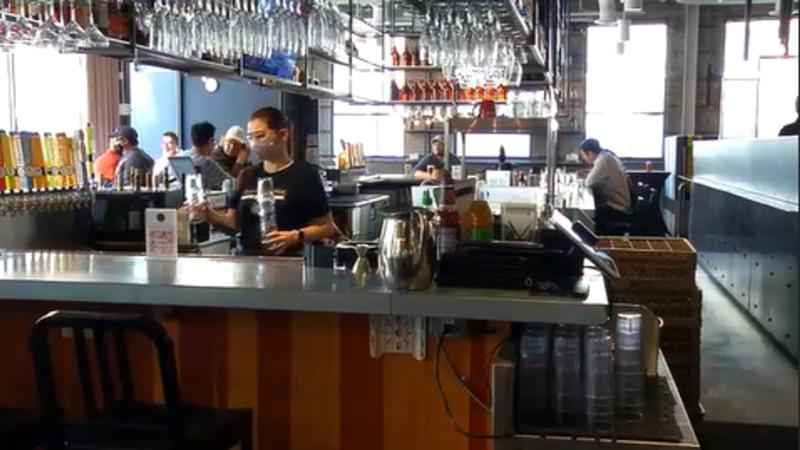Study: Summer brought much-needed business to Minnesota hospitality, travel industries but challenges remain
[anvplayer video=”5054633″ station=”998122″]
As Minnesota marked the unofficial end to summer, travelers visited the Twin Cities for the long weekend. Tourism and hospitality businesses have experienced a much-needed boost this summer.
In July, Minneapolis-Saint Paul International Airport saw more than 2.8 million travelers. It was the airport’s busiest month since February 2020.
“We’ve had a good summer,” said Stephanie Shimp, with Blue Plate Restaurant Company. “With patios open and the high vaccination rate we’ve had here in Minnesota, people are really excited to be back and out.”
In a recent survey of tourism and hospitality businesses, 71% of respondents reported higher summer revenue in 2021 than 2020. Forty-five percent of businesses reported higher revenue during the summer of 2021 than the summer of 2019.
The survey was conducted from Aug. 17 to 24 by Explore Minnesota, Hospitality Minnesota and the Federal Reserve Bank of Minneapolis. There were 324 responses.

[KSTP]
“There’s definitely a mixed bag here in the survey results in terms of the economic snapshot of where the hospitality industry is at in Minnesota,” said Ben Wogsland, the director of government relations for Hospitality Minnesota. “The resort and campground sector, for instance, performed extraordinarily well over the summer – 96 percent of those operators say that their financial health is positive and growing, which is fantastic. […] The higher revenues from some of the restaurants and food service businesses and hotels over this summer was really critical.”
However, about two-thirds of food service businesses and hotels took on substantial debt during the pandemic, according to Wogsland.
“That revenue that they’re bringing in over the summer, to the extent that they’re getting it, is going to paying off that debt,” he said. “Some of the operators did see higher revenue than the summer of ’19, which that’s very positive, but then again so many of them are going to be paying down debt.”
According to the survey, overnight accommodations saw higher gains than other businesses. About 82% of respondents reported higher revenue compared to the summer of 2020. About 63% of food and drink establishments saw higher revenue than in the summer of 2020.
There were regional differences as well.
“When you’re looking at hotel lodging over the last year, Minneapolis has trailed significantly behind other areas of the state,” said Wogsland. “Duluth for example, occupancy rate is up over 82% for the first time you know in the pandemic and that’s tremendous but Minneapolis is half of that.”
In Minneapolis, Brit’s Pub General Manager Shane Higgins said it’s been difficult to draw business from a quiet downtown. Events have been canceled or scaled back for more than a year, and many office employees haven’t returned to work in the city.
“We’re probably two to three times [last year’s] business but certainly not anywhere near where we’d hope to do previous years,” Higgins said. “We’ve battled through it, we’re doing OK, it’s been a challenge for sure.”
He said he’s encouraged by upcoming Vikings games, orchestra performances, theaters re-opening and the convention center hosting events again.
“We’re optimistic because things are getting back,” Higgins said. “We’re hoping downtown businesses will start to come back after Labor Day through the winter months, things that bring people downtown.”
As business continues to bounce back, a new challenge has emerged. There’s a shortage of workers.
“It’s the biggest challenge going,” Higgins said. “In all honesty, we’re crawling to the end of summer.”
According to the survey, 63% of respondents reported tight labor availability.
“Staffing remains to be challenging,” Shimp said.
She said, at Blue Plate Restaurant Company, they’re turning to incentives.
“Offer hiring bonuses, referral bonuses, higher wages,” Shimp said. “We’ve had to really go the extra step to find good talent.”
Both Shimp and Higgins believe a variety of factors are contributing to the shortage.
“Some have COVID issues or immunocompromised folks at home, some are struggling to get day care and I think some are benefiting from the additional unemployment subsidy,” Shimp said.
Higgins also said, “People had to work so they retrained and got out of the industry.”
Both hope more applications with start coming in, as they prepare for the fall season. They’re optimistic business will continue to pick up as it has over the last several months.
“It’s a lot better than last summer,” Shimp said. “We’re getting close to approaching business volumes from 2019 but what’s not to love? It’s summer, we’re outside, we’ve had these patios, people are really happy to be out and about again.”